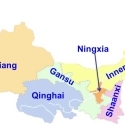19 Jun 2015
An Introduction to Yunnan Province
Yunnan province enjoys fame as the kingdom of mountains, the hometown of rivers, and is a treasure bowl of plant genes. There are more than 18,000 species of higher plants (including 2,500 ornamental, 6,100 herbs, and over 60 spiceberries), 1,700 types of vertebrates and more than 10,000 kinds of insects. Han people and about another 26 minorities, including Yi, Bai, Zhuang, Miao, Dai, and Hui, with a total population of 43.33 million in 2014, live harmoniously in Yunnan.
Geographic location and landscapes
Situated in China’s southwestern border region, the province is contiguous with Guangxi and Guizhou provinces to the east; towering mountains in the northwest adjoin the border of Tibet; to the north is the most populous Sichuan province; to its south, southwest and west parts are Vietnam, Laos, and Burma, respectively. The territory is 394,000 sq. km. The geographical features in the province are diverse and spectacular. The terrain slopes sharp down from the northwest to the southwest. The highest point of this highland reaches the 6,740 m Kagebo Peak in the snowy Meili Mt. on the Yunnan-Tibet border, while the lowest point is 76.4 m along the Sino-Vietnam border. The Nujiang River (called the Mekong in Laos and Vietnam) and the Jinshajiang River (the upper reaches of the Yangtze River) flow under snow-capped peaks where the Zhujiang River and Red River are also originated from. The major landforms in Yunnan are mountains (84%), highlands (10%), small basins and valleys (6%).
Climate
Yunnan province crosses several climatic zones from temperate, north subtropical to tropical zones. it enjoys rich solar radiation, adequate rainfall and tremendous fresh water resources. The annual precipitation is around 1100 mm in most regions and more than 1600 mm in the southern parts. The rainy season is from June to August during which period the precipitation accounts for 60% of the year's total. The dry season spans from November to April during which period the precipitation only accounts for 10-20% of the year's total.
Soils and Agriculture
The major soil types in Yunnan are red soil, paddy soil, purple soil, Lateritic red soil, laterite and some dry laterite soil. More than 70% of the farmlands has low to medium crop yields, subject to sloping lands and rain-fed lands or those with shallow plow layers. Except the fields grown tobacco, vegetable and flowers, most of the cropping lands are K and P deficient, especially for grains.
In 2011, the sowing area for agricultural crops was 8.041 million ha. The common crops are rice, corn, wheat, barley, broad bean, pea, soybean, potato, tobacco, tea, sugarcane, flowers, vegetables, fruits (pineapple, banana, pear, mango), rubber trees, etc. The major cropping systems are rice-broad bean, rice-wheat or barley, corn/tobacco-wheat or barley, corn/tobacco - peas.
Fertilizer consumption
In 2011 the total fertilization consumption in Yunnan was 2,005,000 t (of nutrient) with an application rate of 249 kg/ha of sowing area. Of the fertilizers consumed, there were 1,032,000 t of N, 296,000 t of P2O5, 198,000 t of K2O, and 478,000 t of compound fertilizers. This gives a N: P2O5: K2O:compound fertilizer ratio of 1:0.29: 0.19:0.46, indicating very low K consumption. If subtracting the K fertilizers from those used for tobacco, vegetables and flowers, the amount left for grain crops is very little. Thus, it is crucial to promote balanced fertilization with adequate K fertilizers in agriculture in future.


